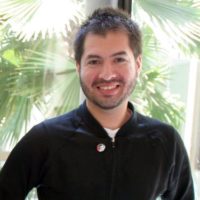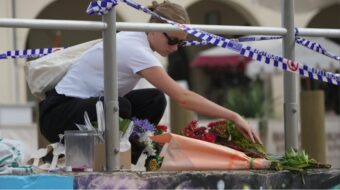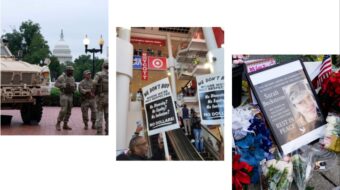LOS ANGELES – A picket line in front of the Philippine Consulate here last month drew attention to the newly elected president of the Philippines, Benigno Aquino, III, and his campaign promise to prosecute officials responsible for crimes against the Filipino people under the former U.S.-backed president, Gloria Macapagal-Arroyo.
The alleged crimes include human rights violations such as torturing, murdering, disappearing, and general acts of repression against the civilian population under the guise of the international fight against terrorism.
Less than two weeks after Aquino began his term in July, five activists were murdered, leaving many people skeptical that this new presidency’s change will only be in face and not policy. Part of Aquino’s campaign platform, in addition to ending corruption and fighting poverty, was bringing to justice those responsible for committing crimes against the people, which includes ex-President Arroyo herself, now serving as member of the Philippines House of Representatives.
Prominently displayed at the July 26 demonstration here were images of detained or slain Filipinos, shown as casualties of the U.S.-backed war on terrorism.
In February of this year, 43 health care workers were arrested – dubbed the Morong 43 – under the charge of being and/or conspiring with communist rebel groups against the government. They included two pregnant women. All are still in custody. There are reports that one of the mothers has given birth recently.
The story of the U.S.-backed Arroyo government ,beginning back in 2001 and named the second front on the war on terror by the Bush administration, has many disturbing similarities to the well-known repressive dictatorships that riddle the history of Latin America – both in Central America (Guatemala, El Salvador) and South America (Chile, Colombia).
The Arroyo government used U.S. aid of millions of dollars in 2002, in allegedly combating terrorists with links to al-Qaida, Muslim separatist groups and communist insurgents. U.S. officials have stated that the U.S. anti-terrorism presence in the Philippines will be continuous and indefinite.
“This is the Colombia of Asia,” said Kuuselo Hilo, a coordinator of the demonstration here, and county coordinator with the International Migrants Alliance.
“This is the longest anti-colonialism struggle in Asia,” Hilo added.
Human rights groups, migrant rights groups and Filipino groups were present with a big percentage of Latino support – both communities having large numbers in the Los Angeles area.
In addition to bringing awareness to the killings, the human rights violations and the Morong 43, groups such as BAYAN-USA (Bagong Alyansang Makabayan, a U.S.-Philippines anti-imperialist human rights coalition made up of 14 organizations) announced and circulated a four-point program, titled “People’s Agenda for National Survival.” The four points are:
1. Katarungan [Justice] – investigate and prosecute Gloria Arroyo and all perpetrators of human rights violations; free the Morong 43 and all political prisoners; justice for victims of human rights violations
2. Kalayaan [Sovereignty] – terminate the U.S.-Republic of the Philippines Visiting Forces Agreement; eject all foreign military personnel from the Philippines; repeal the Mining Act of 1995
3. Karapatan [Rights] – end state-sponsored violence; stop the killings of activists; terminate Operation Plan Bantay Laya and all counter-insurgency programs; advocate for the rights of Filipino migrants abroad and including comprehensive immigration reform in the U.S.
4. Kabuhayan [Livelihood] – Institute a living wage increase; end the Value Added Tax on basic commodities; implement a genuine agrarian reform program; scarp the unfair stock distribution option.
Other demonstrations have taken place since July 26 around the U.S., including in Jersey City, San Francisco and Seattle.
Photo: PW/Luis Rivas










